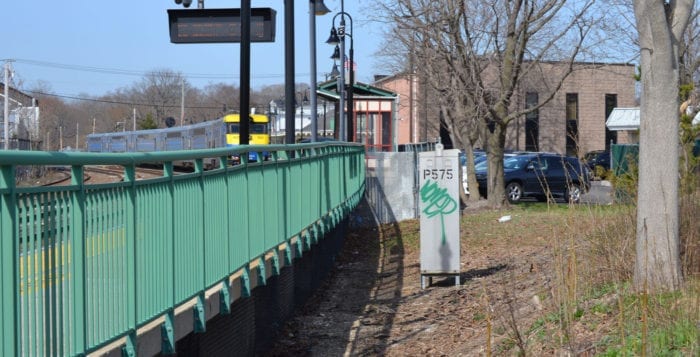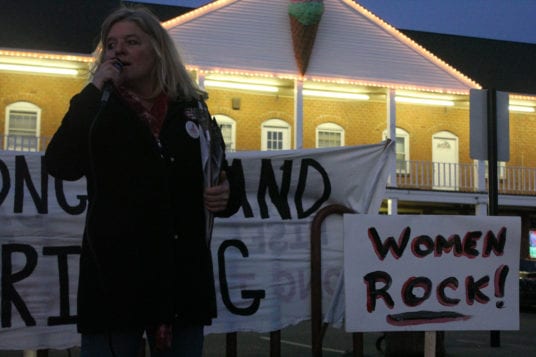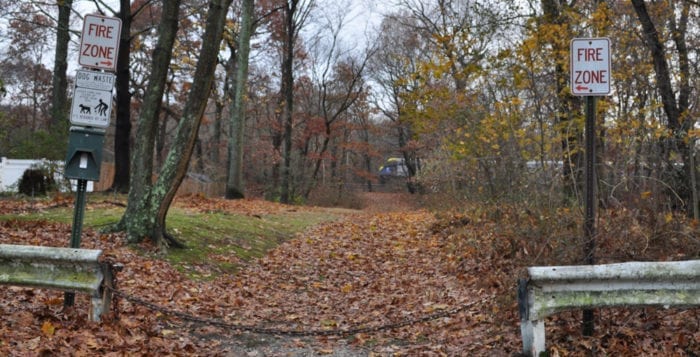History is repeating itself, at the boat ramp in Port Jefferson Marina located at the north end of Barnum Avenue in Port Jefferson Village.
A man is being treated for serious injuries at Stony Brook University Hospital after driving into Port Jefferson Harbor via the ramp at about 5:30 p.m. April 6, according to the Suffolk County Police Department. The car was found submerged underwater and at least one good Samaritan helped remove the man from the car. Members from the Suffolk County Marine Bureau dive team went in the water to search for possible additional victims, and the police said the investigation is continuing.
Several similar incidents have occurred since an episode in December 2005 when then-60-year-old Setauket resident Richard Levin drove into the water on the same ramp and onlookers had to pull his unconscious body from the fully submerged car. Levin died days later as a result of the incident.
“People are dying here and it’s a simple fix,” Christopher Kelsch, one of the people who witnessed Levin’s death 12 years ago and tried to help, said after seeing news of the April 6 incident.

Port Jefferson Harbor April 6. Photo by Andrew Tetreault/Fully Involved Media Group
Kelsch was given a Carnegie Medal by the Carnegie Hero Fund Commission, for his attempts to save Levin’s life. Kelsch had to be rescued by firefighters as a result of his efforts, and suffered from hypothermia in the aftermath. He was also called to give testimony about the incident when Levin’s family sued Brookhaven Town for negligence, a suit that was dismissed by the New York State Supreme Court.
The Carnegie Medal recipient said during the interview he wanted to reach out in part to make the 2017 victim and family members aware he would be glad to help them if they sought him out.
“Somebody needs to shine a serious spotlight because Dr. Levin died at that location,” he said.
A Brookhaven Town spokesperson said in an emailed statement there are clear signs and traffic measures in place to warn residents of the ramp’s location.
“The Port Jefferson boat ramp has existed at its current location for generations,” the spokesperson said. “A number of measures are in place including a multitude of ‘Do Not Enter’ signs, road arrows and other traffic control measures to clearly indicate that this is not an entrance.”
Port Jefferson Village Mayor Margot Garant is taking the issue seriously, and said she asked the village’s code enforcement chief to compile data for her regarding the number of times similar incidents have happened at that location, and she plans to present the data to Brookhaven Supervisor Ed Romaine to reiterate calls for preventative action to be taken by the town. Garant said in a phone interview she had heard the driver was in stable condition as of Saturday, but she was told he had taken a turn for the worse since.
“It’s only a matter of time before this happens again,” Garant said. She added at the present time she plans to call on the town to do something to solve the problem and no plans of possible village actions are currently being discussed. Garant said Port Jefferson Village and Brookhaven Town cofunded a waterfront revitalization plan years ago, which included a proposal to move the town ramp elsewhere.
“This is town-owned property — they have to step up and resolve this once and for all,” Garant said. She added that additional signage beyond two “do not enter” signs or some sort of barricade would be “minimal” steps the town could take.
































